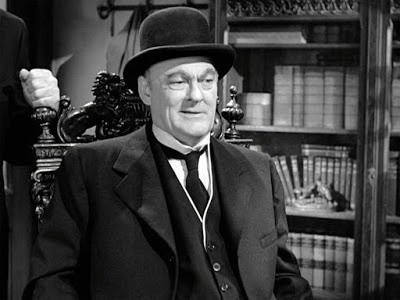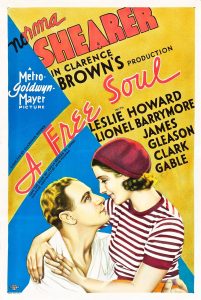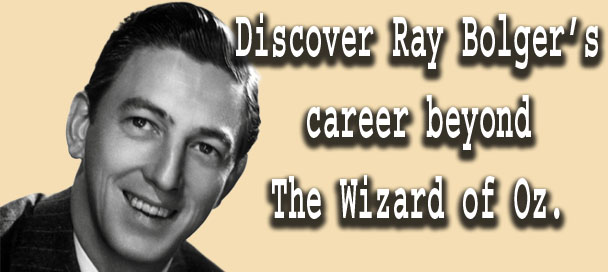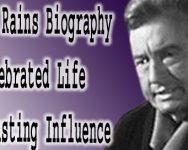⭐ Lionel Barrymore Biography: Remarkable Journey of a Screen Legend

Lionel Barrymore early head shot 1909.
Lionel Barrymore belonged to one of the most storied families in American entertainment, yet he carved a reputation that stood on its own weight. His presence carried a kind of seasoned gravity, shaped by decades on the stage, in silent films, and later in the sound era where his voice alone could anchor a scene.
Lionel Barrymore was one of the most enduring figures in American film, known for powerful performances across silent pictures, early sound dramas, and radio. He became widely recognized for his work with MGM and his commanding roles in films such as A Free Soul and It’s a Wonderful Life. His career reflected careful technique, emotional restraint, and a lifelong understanding of theatrical craft. Barrymore worked with many of the era’s greatest performers, leaving a lasting impression on stage, screen, and radio.
Audiences often remember him for his stern authority or his worn, reflective delivery, but those qualities grew out of a long career marked by discipline and a quiet understanding of character. He worked through changes in the industry that discouraged many of his peers, adapting without losing the craft he had learned in his youth.
By the time he reached his most famous roles, Lionel had already lived enough professional lives for three men. His body of work reveals a performer who knew how to fill a moment rather than force one, and that earned him a place among the most respected figures of early Hollywood.
Lionel Barrymore spent decades battling severe arthritis that confined him to a wheelchair, yet he continued performing through sheer discipline and became even more beloved during this period.
👶 Early Life
Summary: Lionel Barrymore’s childhood shaped his understanding of performance and prepared him for a long career.
Lionel Barrymore was born Lionel Herbert Blythe on April 28, 1878, in Philadelphia, into the celebrated Barrymore acting dynasty. His parents, Maurice Barrymore and Georgiana Drew, were established stage performers, and his uncles, aunts, and grandparents were part of the influential Drew theatrical family. From infancy, he lived in the center of the American stage tradition, surrounded by rehearsals, touring schedules, and the constant movement of professional actors.
Although he appeared in a few stage productions as a child, Lionel never rushed toward the family craft. His early years were marked by a quieter temperament, and he often preferred drawing and music over the bustle of live performance. He received education both at home and at various schools as the family traveled, giving him a patchwork upbringing shaped by changing cities and shifting theatrical seasons.
In his teens, Lionel briefly attempted to step away from the family profession. He studied art in New York and later in Paris, hoping to make a living through painting and illustration. Those years abroad broadened his outlook and gave him the sense of independence he had long sought. Yet the Barrymore name held a steady pull, and financial realities eventually pushed him back toward the stage. When he returned to the United States, he carried both the discipline of formal art training and the inherited instinct for performance, traits that would shape the depth and seriousness he later brought to film and radio.
Explore the Biographies of Iconic Celebrities
Barrymore composed several orchestral works, including pieces later performed on radio broadcasts.
🎬 Career
Summary: Lionel Barrymore became a central MGM figure and delivered some of his most famous roles in the 1930s and 1940s.
Lionel Barrymore entered the world of motion pictures just as the medium was beginning to mature. His film work started at Biograph in 1909, where D. W. Griffith was shaping the grammar of silent cinema. Barrymore appeared in dozens of shorts over the next several years, sharing sets with Mary Pickford, Lillian Gish, Dorothy Gish, Blanche Sweet, Mae Marsh, Henry B. Walthall, and Robert Harron. In The New York Hat (1912) and The Musketeers of Pig Alley (1912), he developed the steady, economical acting style that made him one of Griffith’s most trusted performers. By the time he appeared in Judith of Bethulia (1914), he was already considered one of the studio’s most reliable dramatic actors.
During the 1920s, Barrymore moved between stage and screen with unusual ease. He appeared in Life’s Whirlpool (1917) with Alice Joyce, The Copperhead (1920), and The Great Adventure (1921), creating performances shaped by quiet authority rather than theatrical gesture. At Metro, and later MGM, he worked with a roster of leading actresses that included Claire Windsor, Seena Owen, and Clara Kimball Young.
Sound arrived at the turn of the decade, and Barrymore adapted instantly. In Sadie Thompson (1928), he held his own opposite Gloria Swanson, but it was A Free Soul (1931) that changed the course of his career. Starring alongside Norma Shearer, Leslie Howard, and a fiery young Clark Gable, Lionel Barrymore delivered the performance that won him the Academy Award for Best Actor. The famous courtroom collapse scene became one of the decade’s defining moments and helped launch Gable as a major star.
Barrymore followed that triumph with a string of MGM successes: Grand Hotel (1932) with Greta Garbo, John Barrymore, and Joan Crawford; Rasputin and the Empress (1932), the only film to feature all three Barrymore siblings; Dinner at Eight (1933) with Marie Dressler, Jean Harlow, and Wallace Beery; and Garbo’s Camille (1936) with Robert Taylor.
A severe hip injury and advancing arthritis eventually confined him to a wheelchair in the late 1930s, but MGM refused to let him fade. Instead, the studio reshaped roles to suit his physical limits, beginning with the Dr. Kildare series in 1938. As Dr. Gillespie, he worked with Lew Ayres, Laraine Day, and later Van Johnson, using his voice and expression to anchor scenes even when mobility was impossible. The success of the series kept him a steady presence on screen throughout the early 1940s. At the same time, he joined the Andy Hardy films, appearing as Judge Hardy opposite Mickey Rooney and Lewis Stone, adding a warm, paternal quality to his public persona.
Radio offered him another platform. His annual portrayal of Ebenezer Scrooge, first broadcast in the mid-1930s and continuing into the 1950s, became one of the medium’s most anticipated holiday traditions. Listeners praised his ability to shift from bitterness to redemption with a subtlety that mirrored his finest film work. Even when illness made long shooting schedules difficult, radio allowed him to continue performing at a high level.

Lionel Barrymore as the hard-edged banker Henry F. Potter in It’s a Wonderful Life
Then, in 1946, he delivered the role that secured his legacy for future generations. Frank Capra cast him as Henry F. Potter in It’s a Wonderful Life, alongside James Stewart, Donna Reed, Lionel’s longtime colleague Henry Travers, Gloria Grahame, and Thomas Mitchell. Barrymore’s performance as the hard, cold banker gave the film its central tension. His measured delivery and unyielding expression created a villain defined not by theatrics but by calculation. Each December, as the film returns to television, Barrymore’s presence reintroduces him to viewers who were not yet born when he first played the part.
Even as his health declined in the late 1940s and early 1950s, Barrymore remained active. He appeared with Spencer Tracy in Captains Courageous (1937), with Katharine Hepburn in Christopher Strong (1933), with Margaret O’Brien in Little Lord Fauntleroy (1936), with Robert Taylor in Camille (1936), and with Gene Autry in The Strawberry Roan (1948). His final film years saw him taking smaller parts that leaned on his voice, timing, and authority rather than physicality, allowing him to remain a dependable part of MGM’s character roster.
Across six decades, Lionel Barrymore worked in nearly every branch of American entertainment touring theater in the 1890s, silent pictures in the 1910s, directing and headlining prestige dramas in the 1920s and 1930s, anchoring radio broadcasts in the 1930s and 1940s, and delivering one of cinema’s most unforgettable performances in 1946. His career did not survive on the Barrymore name but on the strength of his craft, his adaptability, and the unmistakable weight he brought to every role placed in front of him.
He once recorded an experimental spoken-word album that collectors still search for due to its unusual format and limited release.

A Free Soul 1931 Film Poster
Original 1931 MGM poster for A Free Soul featuring Lionel Barrymore, Norma Shearer, Leslie Howard, and Clark Gable
🕊️ Later Years
Summary: Health challenges reshaped his later career, but he continued working in radio and film.
By the late 1930s, Lionel Barrymore’s health had begun to erode under the strain of chronic arthritis, old injuries, and the long hours expected of MGM’s contract players. The hip injury that ultimately confined him to a wheelchair never dimmed his commitment to the craft, but it did force him to adapt. He became one of the few Golden Age stars whose later career relied almost entirely on voice, expression, and presence rather than movement, and audiences accepted the transition with unusual loyalty. MGM made sure he remained central to their identity, building the Dr. Kildare and Gillespie films around him and designing sets and blocking that allowed him to work without physical strain.
Despite the restrictions placed on him, Barrymore stayed astonishingly active. His radio work accelerated during the 1940s, offering him a comfortable environment where he could deliver full-bodied performances. His annual turn as Ebenezer Scrooge became a national favorite, with listeners waiting each Christmas Eve for Lionel Barrymore’s unmistakable voice to take them through Dickens’s journey. Film roles continued as well, though they grew more selective. He appeared in Duel in the Sun (1946) under King Vidor’s direction and remained a familiar figure in MGM ensembles that valued the authority he projected simply by speaking a line or observing a scene.
Off-camera, his energy shifted toward quieter pursuits. He took refuge in painting and sketching, hobbies he had cultivated since his youth in Paris. His work was displayed in small exhibitions, and he became known within the studio for gifting charcoal sketches to colleagues. He also composed music, including several small symphonic works and chamber pieces that reflected his early academic training. His artistic life outside acting gave him a kind of balance that the physical pressures of filmmaking had gradually taken from him.
As the 1950s began, Barrymore’s world grew smaller, but he continued to work when he could. His final screen appearance came in Lone Star (1952) opposite Clark Gable and Ava Gardner, a symbolic moment that linked the early decades of his career to the generation he had helped usher in. He remained under MGM contract until his death, and the studio treated him with unusual respect, recognizing him not only as a star but as a bridge to the era when the industry itself was taking shape.
Lionel Barrymore died on November 15, 1954, at age seventy-six, leaving behind a record that spanned more than sixty years of American entertainment. His later years were marked by pain, limitation, and physical decline, yet he never surrendered the seriousness or dignity that defined him from his earliest stage appearances. Even when reduced to voice and expression alone, he remained unmistakably Lionel Barrymore a performer whose authority did not depend on movement but on the quiet force of character.
Read more about James Stewart in our exclusive bio.
Lionel Barrymore originally trained as an artist in Paris before returning to acting, and some of his surviving sketches were displayed in MGM’s offices for years.
🏆 Legacy
Summary: Lionel Barrymore influence endures through classic films, radio traditions, and the legacy of the Barrymore family.
Lionel Barrymore’s legacy rests on an uncommon blend of longevity, adaptability, and a presence that never wavered. He began his career when the American stage still shaped the nation’s entertainment and ended it as one of the defining figures of the studio era. His work bridged generations that might otherwise seem disconnected, moving from silent shorts with Mary Pickford and Lillian Gish to major sound productions featuring Greta Garbo, Clark Gable, Norma Shearer, and Joan Crawford.
As the industry evolved, Barrymore evolved with it. His radio work, especially his beloved annual portrayal of Scrooge, became a fixture of the holiday season and kept him in the public ear through the 1930s and 1940s. His performance as Henry F. Potter in It’s a Wonderful Life secured his place for future generations, returning each December to acquaint new audiences with the authority and precision that defined him.
He also left behind an unusual artistic footprint outside acting. His directing shaped early careers at MGM, his sketches and paintings were admired by colleagues, and his musical compositions revealed a disciplined creative mind shaped by years of formal study. Yet it was his screen work, marked by authority, precision, and emotional restraint, that secured his place in film history. Few performers crossed as many phases of American entertainment, and even fewer maintained relevance through each transition. For modern viewers, Lionel Barrymore stands as one of the clearest examples of how a single actor can help define the tone of an era while still evolving with it.
🗣️ Why They Still Matter
Lionel Barrymore remains a central figure in film history because his performances continue to resonate across generations. His role in It’s a Wonderful Life alone ensures annual rediscovery, while his early work with silent pioneers and later work with MGM link every phase of American film development. His career stands as a complete record of how the medium evolved.
Further Reading & Resources
📖Lionel Barrymore | Biography, Plays, Movies, & Facts | Britannica
📰 Lionel Barrymore - Hollywood's Golden Age

ML Lamp is the owner of Kilroy Was Here. After his 20 years of working in Las Vegas in the entertainment promotions field, Mr. Lamp retired in 2002 from his job to pursue his passion for collectibles. Now as a guest speaker and author he’s living the dream, and sharing his warmth with You.





